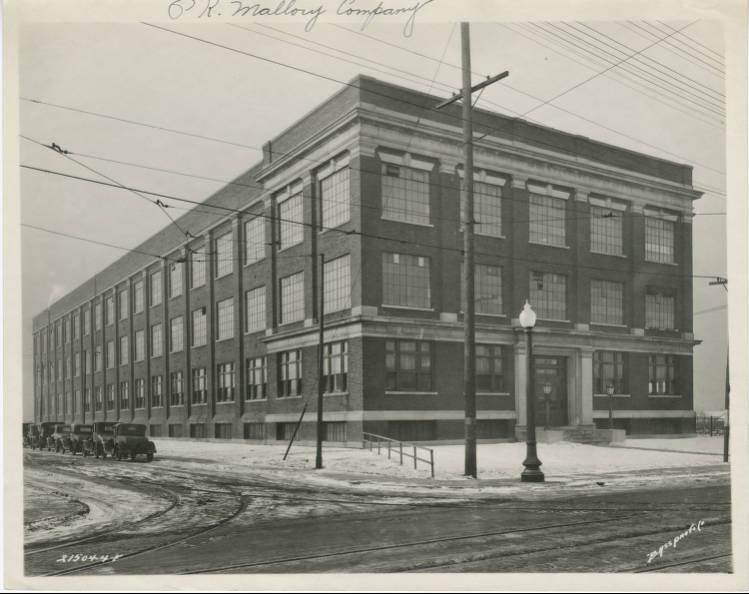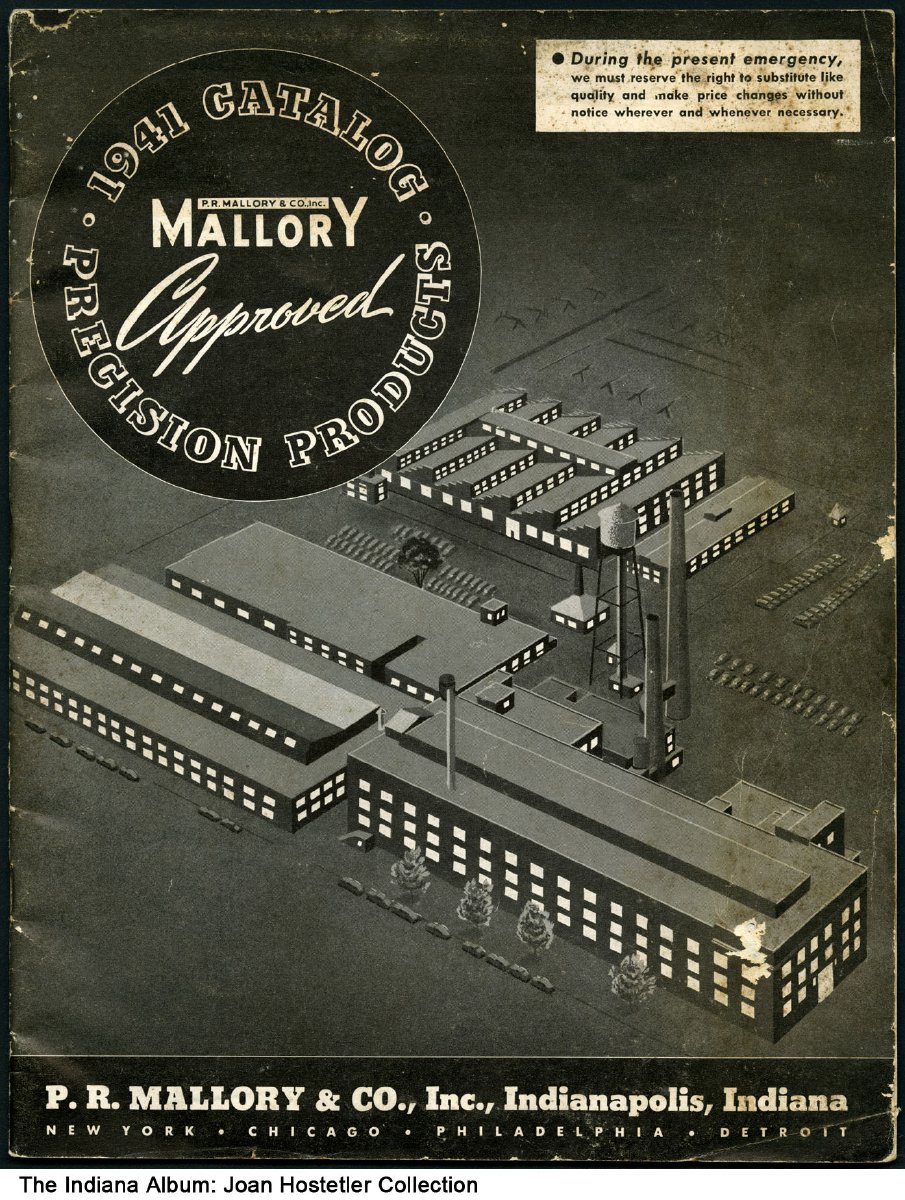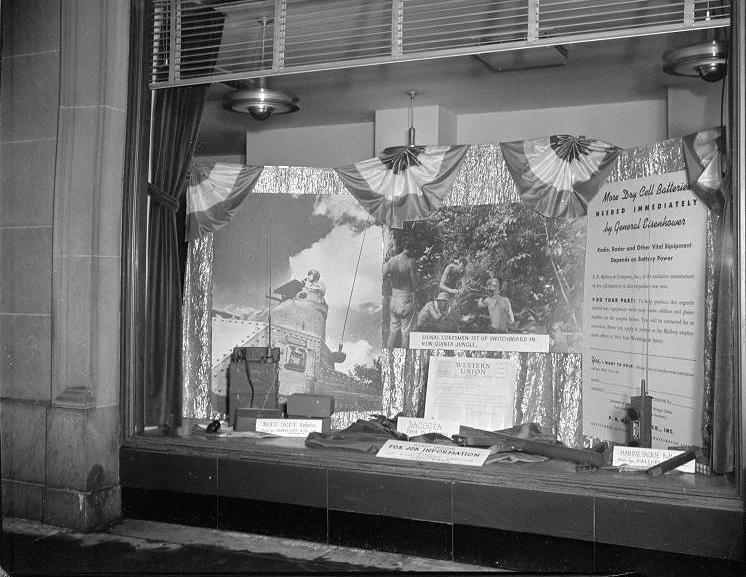Brooklyn, New York native Philip Rogers Mallory founded P. R. Mallory and Company in 1916. The company was a producer of dry cell batteries (Mercury and alkaline Duracell batteries), electronic components including electrolytic capacitors and timer switches, and audible warning devices. It was also the parent firm of Mallory Batteries Ltd., an Irish producer of Ever Ready batteries.

Mallory resigned as general manager of the Commercial Research Company, a manufacturer of incandescent lamps, and founded his own company in Port Chester, New York. Starting with nine employees, Mallory’s company first produced a tungsten filament wire used in light bulbs.
In 1924 the company moved its headquarters to 3029 E. Washington Street in Indianapolis, previously the site of Washington Park. It had several divisions besides Duracell batteries including Mallory Capacitor Company with manufacturing plants in Indiana, Alabama, Tennessee, Kentucky.
General Electric (GE) won a successful 1924 patent infringement suit against Mallory in 1924, forcing him to diversify its product line to remain solvent. The company acquired Elkon Works, an alloy manufacturer, and contracted with Samuel Ruben to develop a dry electrolytic condenser, which reduced the size of capacitors and lowered overall manufacturing costs. In 1928, Mallory joined with GE to create Carboloy Company, a producer of a tungsten carbide cutting tool.
P. R. Mallory and Company suffered heavy losses during the Great Depression and sold its Carboloy division, although it retained its Indianapolis facility. In subsequent years, the company developed the Mallory Vibrator and purchased Yaxley Manufacturing, a leading manufacturer of radio parts and switches.

During World War II, Mallory produced assorted articles for the military, including condensers, noise filters, electrical contacts, ceramic capacitors, and the mercuric oxide battery. In 1942 Samuel Ruben with Mallory developed a mercury battery that was used for portable electronic equipment during the war. Space satellites and air-to-surface missiles later used Mallory-developed timing devices. Boasting a growing list of products in 1959, Mallory established P. R. Mallory International, a subsidiary that owned and operated production facilities in 10 states, England, and Japan.
In the 1950s the company had developed a powerful alkaline AAA cell for use in a Kodak camera flash, but the Kodak company required Mallory to license the design to competitors to ensure availability in the consumer market. The company registered its “Duracell” trademark in 1964 and began rebranding under the new name with the intent of marketing directly to consumers instead of industrial and military customers.

By 1966, Mallory reported more than 8,000 employees, 1,500 in Indianapolis alone, and, by 1975, ranked 507th among U.S. companies with sales of $322.8 million. In 1978, Dart Industries of Los Angeles acquired Mallory and later sold it to Black & Decker, which broke up the Mallory divisions in the late 1980s. All Indianapolis-based remnants of the original company have since closed.
Conscious of the importance of vocational education, Mallory presented a four-story industrial building at 1315 East Washington Street to the Indianapolis Public Schools in December 1964 for use as an occupational and practical arts education center. IPS later leased the property to Ivy Tech.
The P. R. Mallory Campus, located at 3029 East Washington Street, remained vacant for nearly 30 years. In February 2019, the Indianapolis City-County Council’s Metropolitan and Economic Development Committee approved $15 million in bonds to fund its acquisition and renovation. The John Boner Neighborhood Centers and Englewood Community Development Corporation partnered to purchase the two buildings on the site and to lead the project for their redevelopment.
In summer 2020, the former P. R. Mallory Administration Building became the home of the Purdue Polytechnic High School and Paramount School of Excellence. The adjacent “bunker building” houses Uplift Produce, a vertical hydroponic growing operation, Purdue Robotics, and a few other tenants. In October 2020, the project won top honors in Indy Chamber Monumental Awards for innovative reuse.

Help improve this entry
Contribute information, offer corrections, suggest images.
You can also recommend new entries related to this topic.




